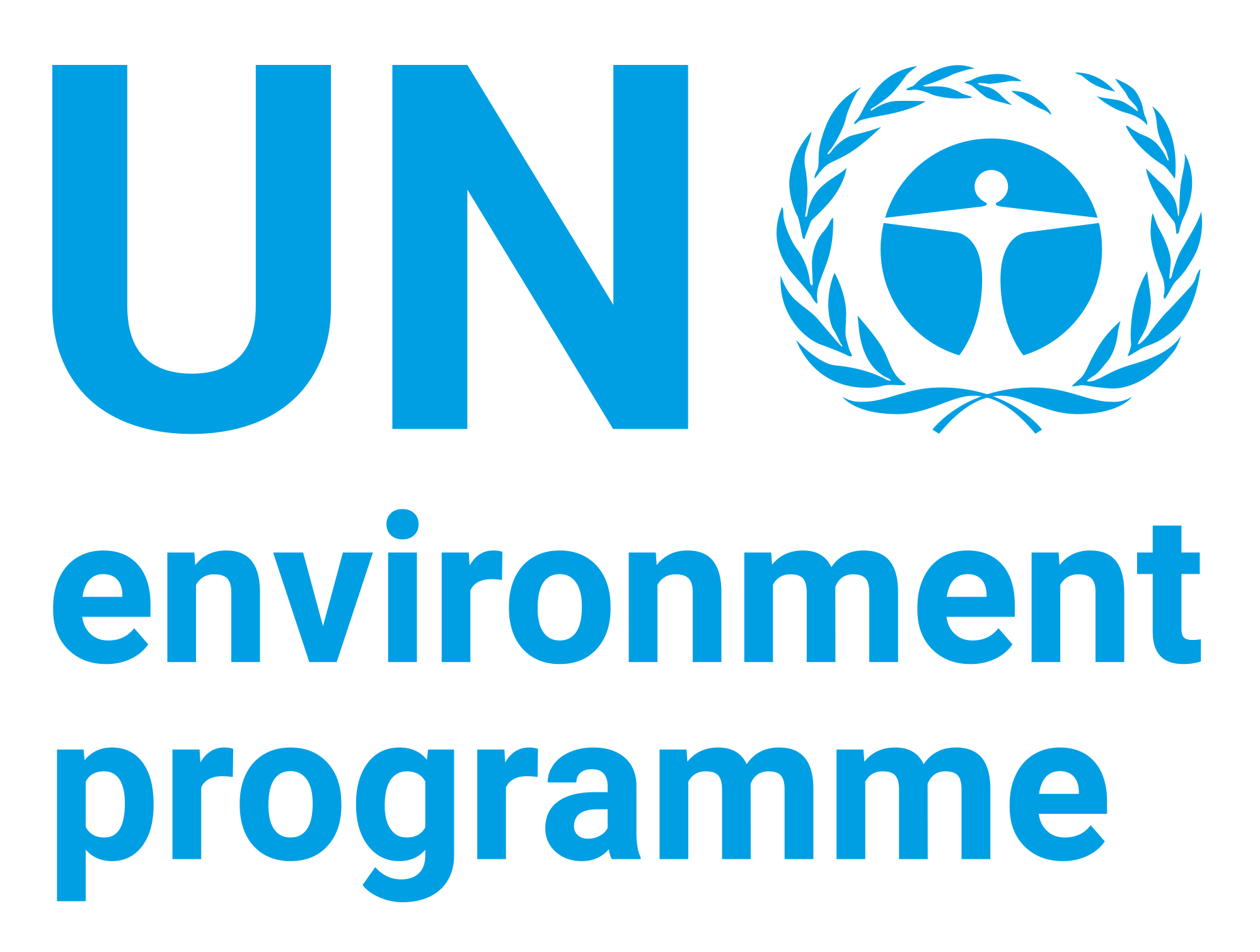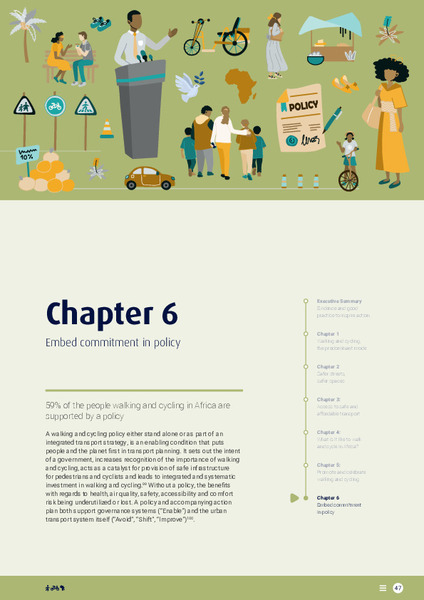| dc.contributor | Economy Division | en_US |
| dc.contributor | Africa Office | en_US |
| dc.contributor.author | United Nations Environment Programme | en_US |
| dc.contributor.author | United Nations Human Settlements Programme | en_US |
| dc.contributor.other | WALK21 | en_US |
| dc.coverage.spatial | Africa | en_US |
| dc.date.accessioned | 2022-05-31T08:57:25Z | |
| dc.date.available | 2022-05-31T08:57:25Z | |
| dc.date.issued | 2022-06 | |
| dc.identifier.uri | https://wedocs.unep.org/20.500.11822/40077 | |
| dc.description | A walking and cycling policy either stand alone or as part of an integrated transport strategy, is an enabling condition that puts people and the planet first in transport planning. It sets out the intent of a government, increases recognition of the importance of walking and cycling, acts as a catalyst for provision of safe infrastructure for pedestrians and cyclists and leads to integrated and systematic investment in walking and cycling.99 Without a policy, the benefits with regards to health, air quality, safety, accessibility and comfort risk being underutilized or lost. A policy and accompanying action plan both support governance systems (“Enable”) and the urban transport system itself (“Avoid”, “Shift”, “Improve”) | en_US |
| dc.format | Text | en_US |
| dc.language | English | en_US |
| dc.relation | Walking and Cycling in Africa: Evidence and Good Practice to Inspire Action | en_US |
| dc.relation.ispartof | Walking and Cycling in Africa: Evidence and Good Practice to Inspire Action | en_US |
| dc.rights | Public | en_US |
| dc.subject | sustainable transport | en_US |
| dc.subject | walking | en_US |
| dc.subject | cycling | en_US |
| dc.subject | Africa | en_US |
| dc.subject | transport policy | en_US |
| dc.title | Chapter 6. Embed Commitment in Policy | en_US |
| wd.topics | Climate Action | en_US |


